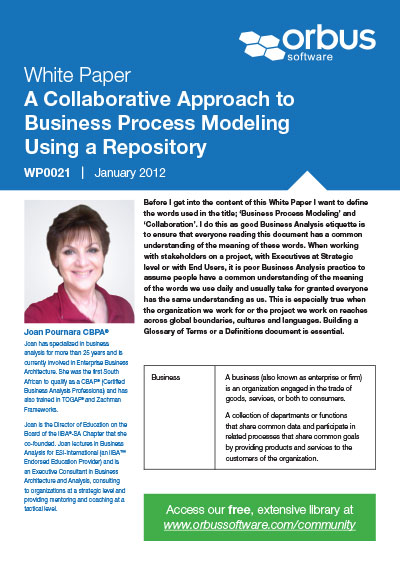The benefits of a repository-based, collaborative modeling environment.
A process model is used to visualise how work flows and the sequence in which it flows. Work may be performed by one person (one role); by a group of people (different roles); in one location or repeated across many locations; start in one area and handed over to another area, be simple (few tasks) or complex. The activities/tasks within the process may be manual, automated or a combination of the two. A process model only describes the sequence of activities/tasks and where performed it does not describe the data structure needed to support the information being transformed during the activities. The data structure is modelled separately using a Data Model and the process and data is usually brought together at the lowest level of Modeling using a data flow diagram (DFD).
A process always has one start (an event (input) to trigger the activity to begin, for example, Customer buys a new product); can have multiple ends (must have at least one) and can have multiple ‘outputs’ (a report to management; invoice to customer; stock order list to supplier, exception report to Audit, as an example).
Please login to continue reading this white paper from Joan Pournara.
